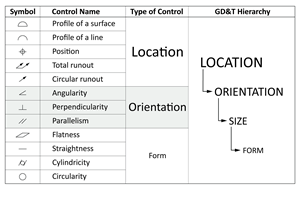Delcam (Salt Lake City, UT) has launched the 2012 version of its FeatureCAM feature-based CAM system, with a range of enhancements to enable faster and easier programming, and produce more efficient toolpaths to give greater machine productivity. All these developments will ensure that FeatureCAM retains the leadership in programming speed and ease of use it has held since its launch in 1995, when it was the world’s first feature-based programming system. Full details, including videos demonstrating the new functionality, can be seen on www.delcam.tv/fc2012/lz.
A number of the improvements will make FeatureCAM even easier to use. For example, a range of keyboard shortcuts have been added, including isometric view options, which will allow faster programming. It has been made easier to select multiple items from the operations tree and to move all the features in a group, for example, a network of similar holes or all the operations on a particular spindle. In addition, warning or error messages can be displayed simply by hovering over the relevant icon in the Operations List.
Toolpath editing has also been made much easier. Toolpaths are displayed more clearly, selection of toolpaths has been simplified and an “undo” option added.
Target part comparison has been extended to cover multi-axis operation for both milling and mill-turn equipment. This allows the user to compare a model of the desired final shape with the shape achieved by the programmed toolpaths. It provides a quick check of any material remaining on the part, and of any gouges or collisions. Previously, this option was only available for 2- and 3-axis operations.
Two new strategies are available—back boring and spiral roughing. Back boring allows more parts to be completed in a single set-up, with larger bores able to be produced on the reverse side of the part. Spiral roughing can be used instead of Z-level roughing. It uses a single continuous toolpath instead of a series of levels and so gives a smoother finish with no dwell marks.
The most important improvement for increasing machine productivity comes from further developments in the use of stock models to cover 2D features, including bosses, sides and slots. The models allow the user to visualize the stock remaining after each operation. This makes it easier to eliminate air cutting and so generate more efficient toolpaths with reduced machining times. The models also simplify the selection of the most appropriate tool sizes for rest-roughing and finishing operations.
A number of extra options have been added to the tooling database. This database is a key part of the automation in FeatureCAM as it allows the optimum operating conditions to be associated with each tool. In most companies, the database is developed by the most experienced user. It then ensures that even inexperienced operators use safe and efficient cutting parameters. The new options in FeatureCAM 2012 allow more variables to be specified, including maximum cut depth and the optimum ramp angles.
Fully-automated de-burring and chamfering, when programming 2- or 2.5-axis parts, were added in FeatureCAM 2011. Tool selection for these operations has now been improved, to avoid unnecessary tool changes.
Other improvements include a new option to automatically counterbore holes before drilling, the ability to have a negative leave allowance (such as a fitting allowance) for turning or wire EDM to produce undersized features without remodelling, and much improved performance on the largest part files with hundreds of thousands of entities.
delcam.com
Related Content
How to Select a Mold Temperature Controller
White paper shares how cooling channel analysis, which collects maximum pressure drop, total flow rate and heat dissipation, eases the performance evaluation of mold temperature controllers.
Read MoreTolerancing in Mold Design, Part 2: Using GD&T to Address Conventional Tolerancing Issues
Mold designers can achieve a single interpretation of workpiece functionality when following the American Society of Mechanical Engineers Geometric Dimensioning and Tolerancing standard.
Read MoreTolerancing in Mold Design, Part 1: Understanding the Issues of Conventional Bilateral Tolerancing
Mold designers must understand the location, orientation and form limitations of conventional tolerancing before changing to another dimensioning system.
Read MoreMoldMaking Technology's Most-Viewed Content 2022: Products
MMT shares the five top-viewed technologies, equipment and services of 2022 in each Engineer, Build, Maintain and Manage tenet based on Google Analytics.
Read MoreRead Next
Are You a Moldmaker Considering 3D Printing? Consider the 3D Printing Workshop at NPE2024
Presentations will cover 3D printing for mold tooling, material innovation, product development, bridge production and full-scale, high-volume additive manufacturing.
Read MoreReasons to Use Fiber Lasers for Mold Cleaning
Fiber lasers offer a simplicity, speed, control and portability, minimizing mold cleaning risks.
Read MoreHow to Use Continuing Education to Remain Competitive in Moldmaking
Continued training helps moldmakers make tooling decisions and properly use the latest cutting tool to efficiently machine high-quality molds.
Read More











.png;maxWidth=300;quality=90)













